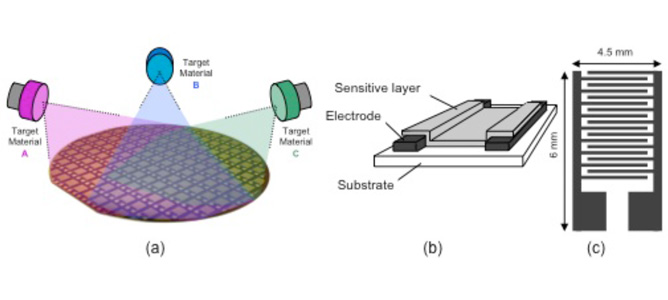Identifying key materials for chemical sensors

(a) Set-up for combinatorial sputter approach of metal oxide thin films, (b, c) cross- sectional view of the fabricated sensors.
February 2012
This project looks at the creaton of a rapid, convenient, and effective solution for discovering multicompositional materials with the best performance from a large compositional landscape.
To achieve this, MCN’s Dr. Sasi Kandasamy collaborated with Dr. Adrian Trinchi and Dr. Tim Muster from the Centre for Materials Science and Engineering and CSIRO.
In designing chemical sensors, combinatorial approaches facilitate with relative ease the discovery of new material compositions with optimised chemical sensing properties, particularly when combined with high-throughput analysis. This in turn allows for libraries of materials that have high sensitivity and selectivity towards specific analyte chemical species to be established.
In this collaborative initiative, the project uses an array of approximately 12 x 12 sensors, fabricated on a 4-inch silicon wafer and tested for their hydrogen gas sensing characteristics using high-throughput impedance spectroscopy. Metal oxide thin films with different compositions of titanium, tungsten and molybdenum were deposited using reactive sputtering at different sites on a single substrate by using masks to define the film deposition sites. The different signal fingerprints of the sensors with different concentrations of these elements successfully demonstrates the validity of these combinatorial chemical sensor design.


